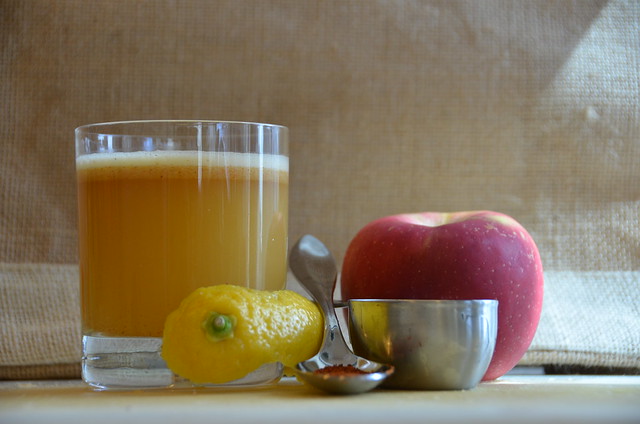Last week the journal Nutrition made headlines with a new study that analyzed the fructose content of soda and juice in an effort to compare drinks that use high fructose corn syrup (HFCS) with those that don’t. The results may surprise you.

For a long time, fructose (the sugar naturally found in fruit) has been associated with obesity and related diseases. However, as the fructose content of drinks is not specifically indicated on the nutrition label, it can be difficult to assess just how much is in a beverage. Individuals seeking to limit their fructose intake may be simply avoiding foods with high HFCS, but is that an effective way to reduce fructose intake?
To answer this question, researchers analyzed several sodas and juices (including 100% fruit juice) to determine the exact amount of fructose in each. The results highlight the confusion about the actual fructose content of the beverages we choose.
While it may not surprise you that Mt. Dew, Mug Root Beer and Pepsi all have 65 grams or more of fructose/liter, it may be shocking that Minute Maid 100% Apple Juice does too and that Juicy Juice 100% Apple Juice is right up there as well. In other words, if it is fructose that you are trying to avoid, then simply looking for HFCS on the ingredient list is not reliable. Nearly half of the juices researchers sampled had over 50% fructose, some contained HFCS and some did not. Further, the data shows that Minute Maid and Juicy Juice (100% Apple Juice) and V8 Splash Berry Blend all have a higher percentage of fructose than Coca-Cola.
So what does this mean for you? To begin, it underscores the need for us to avoid all sweetened beverages and primarily consume water, seltzer, unsweetened beverages and milk/unsweetened dairy products. It also raises the question of the role of fructose in obesity, since other research has shown that even when HFCS is avoided, obesity (and especially childhood obesity) isn’t reduced. Possibly this is because of all of the fructose children consume via juice drinks? Also, as other studies have highlighted the association between fructose and metabolic disease, it underscores the need for us to avoid these beverages. Lastly, it leads us to wonder just how much fructose is present when we make drinks ‘healthy’ drinks with our juicers or enjoy beverages from ‘health’ stores.
MyPlate guidelines suggest only 4-6 ounces of juice a day for children and encourage replacing juice with whole frozen, fresh or canned fruit instead. Since changing your family’s juice habit may be a challenge, we have some tips to make it a little easier:
- Mix 2 ounces juice with 6 ounces of water or regular or flavored seltzer
- Make fruit juice ice cubes, which will flavor water or seltzer as they melt
- Pass on the juice and make a smoothie instead. Nutritious smoothies, like this 3 Guiding Star Green Smoothie, are easy to prepare and offer a variety of nutrients to create a fiber, protein rich drink
- If juice is on your shopping list, let the Guiding Stars navigate you toward the “good, better or best” choices.
Juice boxes:
- 3 Guiding Stars: Capri Sun Super V
- 2 Guiding Stars: V8 Fusion Fruit Punch, Minute Maid 100% Juice or Fruit Punch, Fruitables Fruit and Vegetable Blends, Apple and Eve 100% Apple Juice, Hansen’s Junior 100% Juice boxes
- 1 Guiding Stars: Apple and Eve Fruit Punch, Honest Kids Fruit Punch
Bottled Juice:
- 2 Guiding Stars: Motts for Tots, Dole Pineapple, Langers 100% No Sugar Added Cranberry Juice, Ocean Spray 100% No Sugar Added Grapefruit Juice, V8 Fusion Light or 100% Juice, Low Sodium V8 Vegetable Juice, 100% Orange or Grapefruit Juice and more